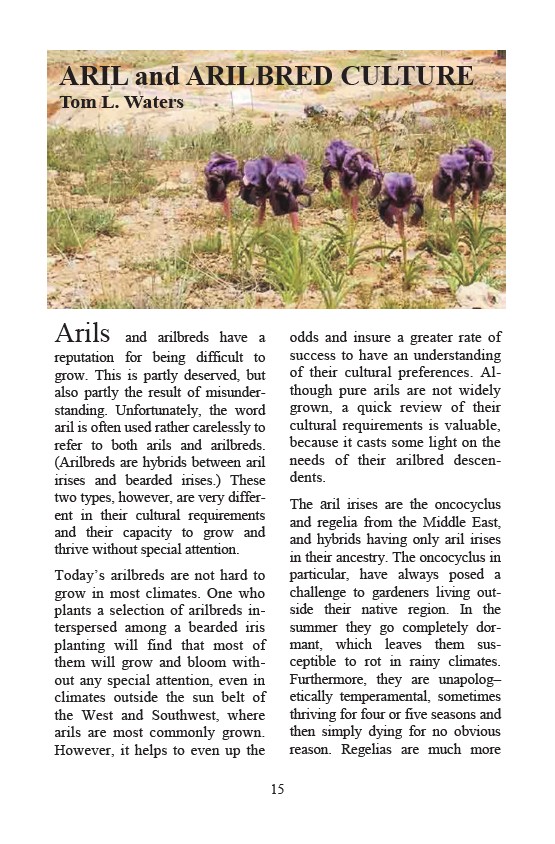
ARIL and ARILBRED CULTURE
Tom L. Waters
15
Arils and arilbreds have a
reputation for being difficult to
grow. This is partly deserved, but
also partly the result of misunder-standing.
Unfortunately, the word
aril is often used rather carelessly to
refer to both arils and arilbreds.
(Arilbreds are hybrids between aril
irises and bearded irises.) These
two types, however, are very differ-ent
in their cultural requirements
and their capacity to grow and
thrive without special attention.
Today‟s arilbreds are not hard to
grow in most climates. One who
plants a selection of arilbreds in-terspersed
among a bearded iris
planting will find that most of
them will grow and bloom with-out
any special attention, even in
climates outside the sun belt of
the West and Southwest, where
arils are most commonly grown.
However, it helps to even up the
odds and insure a greater rate of
success to have an understanding
of their cultural preferences. Al-though
pure arils are not widely
grown, a quick review of their
cultural requirements is valuable,
because it casts some light on the
needs of their arilbred descen-dents.
The aril irises are the oncocyclus
and regelia from the Middle East,
and hybrids having only aril irises
in their ancestry. The oncocyclus in
particular, have always posed a
challenge to gardeners living out-side
their native region. In the
summer they go completely dor-mant,
which leaves them sus-ceptible
to rot in rainy climates.
Furthermore, they are unapolog–
etically temperamental, sometimes
thriving for four or five seasons and
then simply dying for no obvious
reason. Regelias are much more